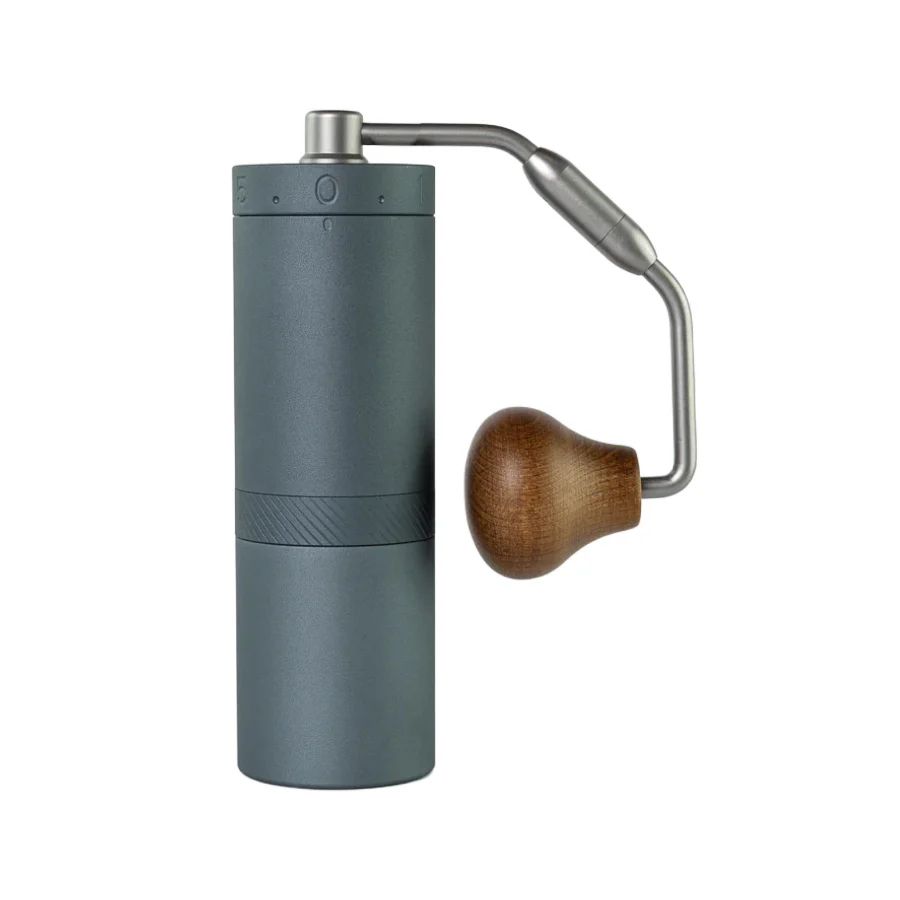Unveiling the Power of Accuracy: Presenting 1Zpresso J-Ultra Mill
Unveiling the Power of Accuracy: Presenting 1Zpresso J-Ultra Mill
Blog Article
Master the Art of Grinding Coffee Beans: A Guide to Coffee Grinders
For coffee fanatics, the procedure of grinding coffee beans is even more than simply a regular job; it is an art type that can substantially affect the taste and high quality of the final brew. Comprehending the nuances of different mill kinds, picking the ideal work size, and utilizing the right techniques are vital steps towards attaining that excellent mug of coffee.
Kinds Of Coffee Grinders
There are 3 primary kinds of coffee grinders frequently used by coffee lovers: blade mills, burr grinders, and manual mills. Blade mills are the most standard kind, making use of a straightforward blade to slice the coffee beans. While they are inexpensive and very easy to use, they usually result in irregular coffee grounds due to inconsistent grinding.
Manual mills, as the name recommends, call for hand-operated initiative to grind the coffee beans. Each kind of coffee mill has its benefits and suitable usage situations, catering to the diverse preferences of coffee enthusiasts.

Choosing the Right Work Size
With an understanding of the various kinds of coffee grinders, the following vital step in achieving the excellent cup of coffee is selecting the ideal work size. The work size plays a substantial duty in determining the taste profile of your coffee (1Zpresso J-Max). Different developing methods call for certain work sizes to maximize the extraction of tastes from the coffee grounds
For a crude grind, suitable for French press and cold brew approaches, the coffee beans must resemble breadcrumbs, supplying a durable and strong taste. Medium-coarse grinds, suitable for Chemex or Clever Dripper, have a structure comparable to coarse sand, supplying a balanced taste.
Tool grinds, frequently made use of in drip coffee makers, have an uniformity appearing like regular sand, leading to a well-rounded flavor. Great grinds, ideal for espresso devices, belong to table salt, yielding a rich and extreme preference. Extra-fine grinds, made use of in Turkish coffee, are as fine as powdered sugar and produce a strong and potent brew.
Grinding Strategies for Ideal Flavor
To draw out the maximum possibility of taste from your coffee beans, mastering proper grinding methods is necessary. Uniformity is vital when it comes to grinding coffee beans for optimal flavor. Guaranteeing that the coffee beans are ground uniformly is critical to attain a well balanced removal throughout the developing procedure. Among the essential methods for improving flavor is to change the grind size based upon the developing approach being made use of. For instance, a great grind is optimal for espresso devices, while a coarse work is better browse this site for French my response press brewing. Additionally, the grinding time plays a significant duty in taste extraction. Over-grinding can lead to a bitter preference, while under-grinding might cause a sour flavor. It is recommended to experiment with various grind sizes and developing times to discover the perfect equilibrium that fits your taste choices. By paying interest to these grinding techniques, you can boost the flavor profile of your coffee and appreciate a much more rewarding mug whenever.
Maintenance and Cleaning Up Tips

Along with routine cleansing, it is vital to examine your mill for any indicators of wear or damage. Examine the blades, burrs, and other parts for any monotony or malfunctions. Replace any kind of worn-out components promptly to preserve the top quality of your coffee grind. Store your mill in a dry and clean atmosphere to prevent any wetness or dirt from affecting its performance. By adhering to these upkeep and cleaning suggestions, you can make certain that your coffee grinder continues to provide scrumptious fresh ground coffee for years to find.
Troubleshooting Common Mill Issues


Guaranteeing your coffee grinder works smoothly needs adept troubleshooting of typical concerns that may emerge during its usage. One usual problem with coffee mills is inconsistent grind dimension.
Another regular concern is grinder clogging. This can occur when oils from the coffee beans develop and block the grinder's chute. To settle this, disassemble the grinder and tidy all components thoroughly, paying special focus to the chute and burrs. Additionally, bear in mind overfilling the receptacle to stop clogs.
Last but not least, if your mill is producing excessive noise during procedure, it can show a problem with the motor or internal elements. In such situations, it is suggested to consult the producer's directions for fixing steps or seek expert help to identify and remedy the concern immediately.
Conclusion
In verdict, understanding the art of grinding coffee beans entails recognizing the various kinds of coffee mills, selecting the ideal grind size, utilizing proper grinding strategies for optimum go to this website taste, and preserving and cleaning up the grinder frequently. By complying with these guidelines and repairing usual mill problems, coffee enthusiasts can boost their coffee developing experience and take pleasure in a tasty cup of coffee every time.
Report this page